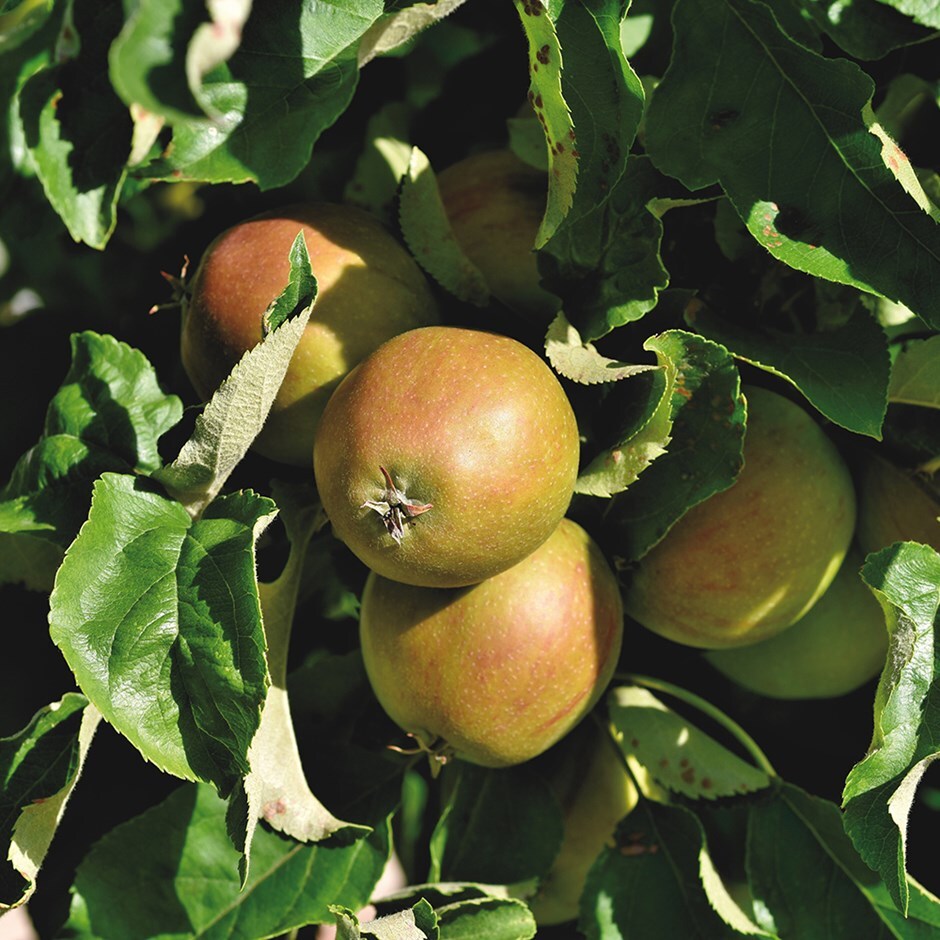apple 'Isaac Newton'
cooking apple ( syn. Malus domestica 'Isaac Newton's Tree' )
This plant is deciduous so it will lose all its leaves in autumn, then fresh new foliage appears again each spring.
- Position: full sun
- Soil: moderately fertile, moist but well-drained soil
- Rate of growth: average
- Flowering period: April and May
- Hardiness: fully hardy
Grow and eat the apple that helped discover gravity! ‘Isaac Newton’ has a historic background, making this variety very special having been propagated from the apple tree whose parentage goes back to Sir Isaac Newton’s garden at Woolsthorpe, Lincolnshire in 1600. Its mid-october ripening fruit are large, greenish-yellow with dull red stripes and are excellent for purées and cooking. In spring, the tree is covered in pink-flushed, white blossom.
Pollination information: This apple belongs to pollination group 3, however it is partially self fertile, so does not need a pollinating partner to produce a crop of apples. For a bumper crop, it can be cross-pollinated with other apples in this group.
Pollination information: This apple belongs to pollination group 3, however it is partially self fertile, so does not need a pollinating partner to produce a crop of apples. For a bumper crop, it can be cross-pollinated with other apples in this group.
When planting your apple tree, prepare a hole up to three times the diameter of its root system. Fork over the base of the pit in readiness, incorporating plenty of organic matter into the backfill and planting hole. Avoiding frozen and waterlogged soil, trees should be planted out as they arrive. If you've ordered a bare root tree, soak the roots in a bucket of water for half an hour prior to planting - or if this is not possible, they can be heeled in temporarily, covering their roots with soil, or potted up. Once in the ground, stake firmly and keep the base weed-free. Apply a balanced fertiliser in early spring to support growth and fruiting and provide regular watering during hot, dry spells. The main winter prune, avoiding frosty conditions, involves removing dead, dying, and diseased wood to create an open crown. Additionally, reduce leaders and laterals by a third to establish an airy structure without crisscrossing branches. In August, summer prune by shortening side shoots longer than 20cm (8”) back to three leaves, promoting fruit ripening and encouraging more fruit buds.

